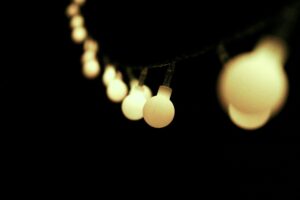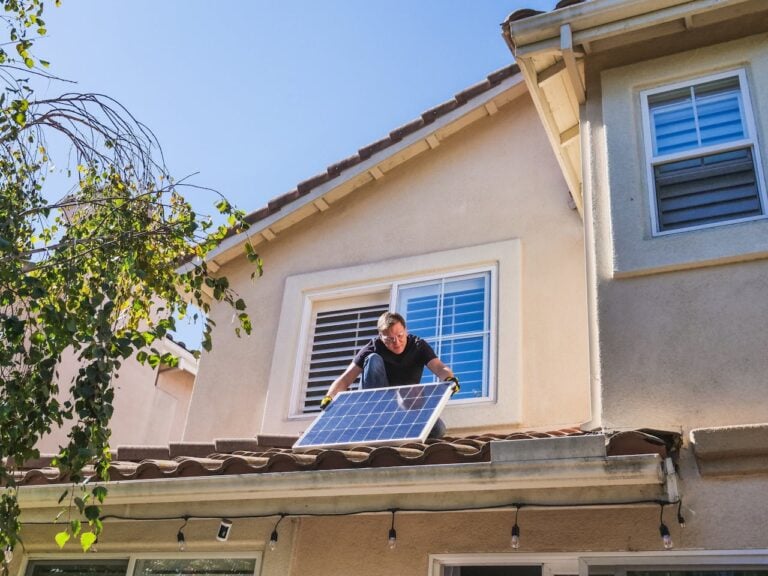What Light Bulbs Are the Best for Your Home and the Environment?
 Everyone interested in sustainability has heard the light bulb debate — incandescents vs. LEDs. If you want to become more environmentally conscious, you’ll want to understand which bulb is best for the planet and your long-term energy consumption. Is there new information in the light bulb world hinting at the best option for a brighter future? Compare options to discover the ultimate light bulb for the planet.
Everyone interested in sustainability has heard the light bulb debate — incandescents vs. LEDs. If you want to become more environmentally conscious, you’ll want to understand which bulb is best for the planet and your long-term energy consumption. Is there new information in the light bulb world hinting at the best option for a brighter future? Compare options to discover the ultimate light bulb for the planet.
What Are the Different Types of Light Bulbs?
Each light bulb variant has these primary characteristics — lumens, wattage, shape, color and temperature. Eco-conscious individuals will also want to consider life span, energy consumption and how they must dispose of the bulb at the end of its life cycle.
Developing a comprehensive understanding of what’s best requires knowing what’s out there. Here are a few examples:
| Lightbulb | Wattage | Life Span | Energy Use |
| LED | 2.5 to 16 | Up to 22 years | Very low |
| CFL | 3 to 120 | Up to 9 years | Low |
| Fluorescent | 4 to 400 | Up to 7 years | Low |
| Halogen | 5 to 500 | Up to 1 year | Medium |
| Incandescent | 5 to 500 | Up to 2 years | High |
There are several other types, including antique Edisons and HID bulbs for commercial purposes. For all light bulbs, lumens, or the brightness, varies based on the wattage. Most light bulbs are disposable in a home trash bin unless they contain mercury. Ideally, all bulbs should hit recycling bins, and organizations like the Environmental Protection Agency (EPA) offer solutions, even for mercury-contaminated CFLs.
Choosing Bulbs for the Home
Heat output and energy consumption directly correlate with utility bills. Several-degree differences add up over time. Take fluorescent and LED bulbs — the former makes 70% less heat and the latter is 75% more efficient than incandescents.
If a home replaces inefficient bulbs with LEDs, residents could see savings of up to $225 yearly because lighting accounts for about 15% of a home’s electricity. Additionally, LEDs last up to 25 times longer than incandescent bulbs.
For households wanting to embrace technology and convenience, LEDs are also the best choice. Motion-detecting lights, smart bulbs, dimmers and automated grow lights for plants typically operate with LEDs.
The last consideration for households is safety. Immediately dismiss any bulb with mercury, including fluorescents, when possible. Despite how bright LEDs glow, they have lower temperatures compared to other options. Others emit the majority of their energy as heat. Low energy use often means low temperatures, which is ideal for table lamps or other bulbs close to children and pets.
Choosing Bulbs for the Planet
Picking a light bulb based on its impact has never been more straightforward. Projects like Energy Star have attributed their seal to products meeting eco-friendly standards. LED bulbs have become the standard for this reason. They have the highest efficiency compared to CFLs and incandescents.
However, environmentally friendly bulbs improve the planet in more ways than reducing a building’s energy consumption.
Pollution
Though LED bulbs produce light, they cause far less light pollution than other bulbs. Their light doesn’t scatter as much, remaining localized. The feature is primarily helpful for outdoor lights, where nocturnal species would be affected if they stayed on.
Noise pollution is another consideration. The low hums might comfort some people, but they can disrupt species, much like light pollution. Insects may not be able to hear mating calls or find what they need if buzzing bulbs get in the way.
Greenhouse Gases (GHGs)
LEDs produce fewer GHGs over the lifetime. Lighting accounts for around 2% of global emissions and nearly 5% of carbon dioxide emissions, and a worldwide pivot to LEDs could save 1,400 million tons of carbon dioxide. It would also eliminate the need to build 1,250 power stations because LEDs use less energy than alternatives. The savings from those plants are massive, primarily when attempting to hit climate action targets.
Chemical Removal
Lighting must do away with mercury. LEDs and many other bulbs don’t use it because the chemicals seep into the environment. Pollution happens because people think it’s satisfactory to throw them away in trash bins when, instead, they should arrange special disposal collection for products with mercury. Negligence makes matters worse.
It’s a habitat and soil issue because the contaminants hurt biodiversity and industries like agriculture for food production. It also becomes a public health concern because the exposure causes long-term impacts.
Plant Growth
Plants love LEDs when equipped with the correct spectrum of wavelengths. The average houseplant will enjoy them, but agriculturalists can also leverage their power to boost yields and make crops healthier. Indoor growing environments, like hydroponic and vertical farms, should invest in LED-powered grow lights to recreate photosynthesis where no natural light is present.
Shining a Light
LEDs are still the best option for the planet and home. Unless inventors fashion a new bulb type, this should be the default moving forward. They are safe, economical and considerate when looking at budgets and the Earth’s recovery from environmental damage. Everyone in residential and commercial buildings should advocate for switching because it is a simple way to make a monumental long-term difference.


